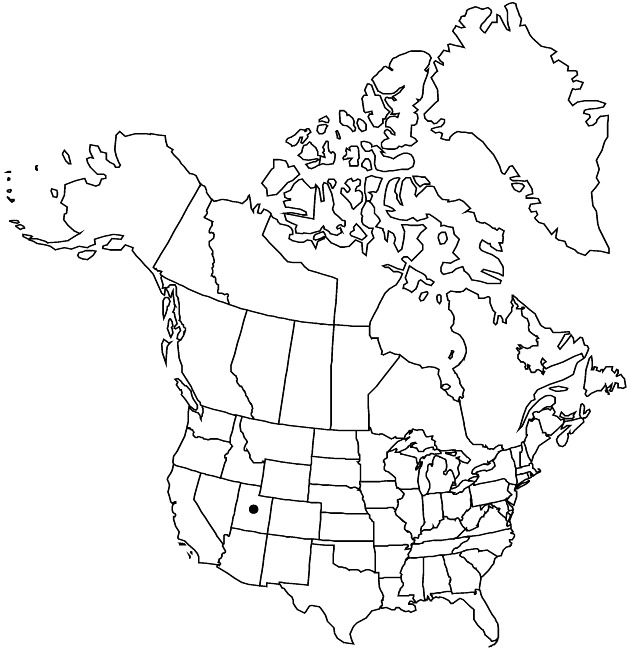Gutierrezia pomariensis
Great Basin Naturalist 43: 288. 1983.
Subshrubs, 20–50 cm. Stems sparsely scabrous or glandular-scabrous to glabrate. Leaves: basal absent at flowering; cauline blades 1-nerved, linear, 0.5–2.5 mm wide, slightly reduced distally. Heads borne singly or in pairs on bracteate peduncles, or some almost sessile, in loose arrays. Involucres cylindro-turbinate to turbinate-campanulate, 3–5 mm diam. Phyllary apices (green, broadly rounded), thickened, (prominently gland-dotted). Ray-florets (4–) 5–7 (–8); corollas yellow, 2–5 mm. Disc-florets 5–15. Cypselae 1–2 mm, faces without oil cavities, loosely strigose; pappi of 1–2 series of oblong-lanceolate scales 1–2 mm. 2n = 32.
Phenology: Flowering Jul–Sep.
Habitat: Dry, open, rocky sites, mixed desert shrub communities
Elevation: 1400–2200 m
Distribution

Utah.
Discussion
Gutierrezia pomariensis is similar to G. sarothrae and sympatric with it; the two are ecologically distinct, with G. pomariensis occupying drier habitats. “Intermediates in a populational sense are few and apparently confined to the ecotone in places where the two taxa grow nearby” (A. Cronquist 1994).
Selected References
None.
Lower Taxa
"[" is not declared as a valid unit of measurement for this property."]" is not declared as a valid unit of measurement for this property.